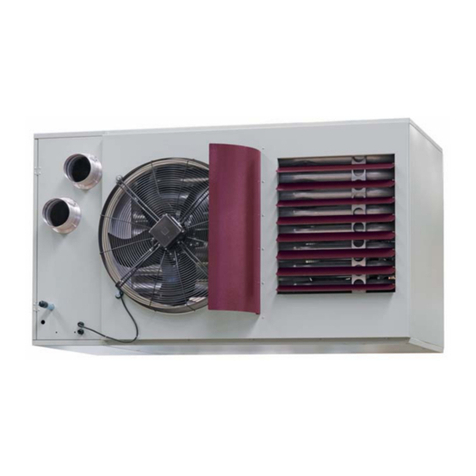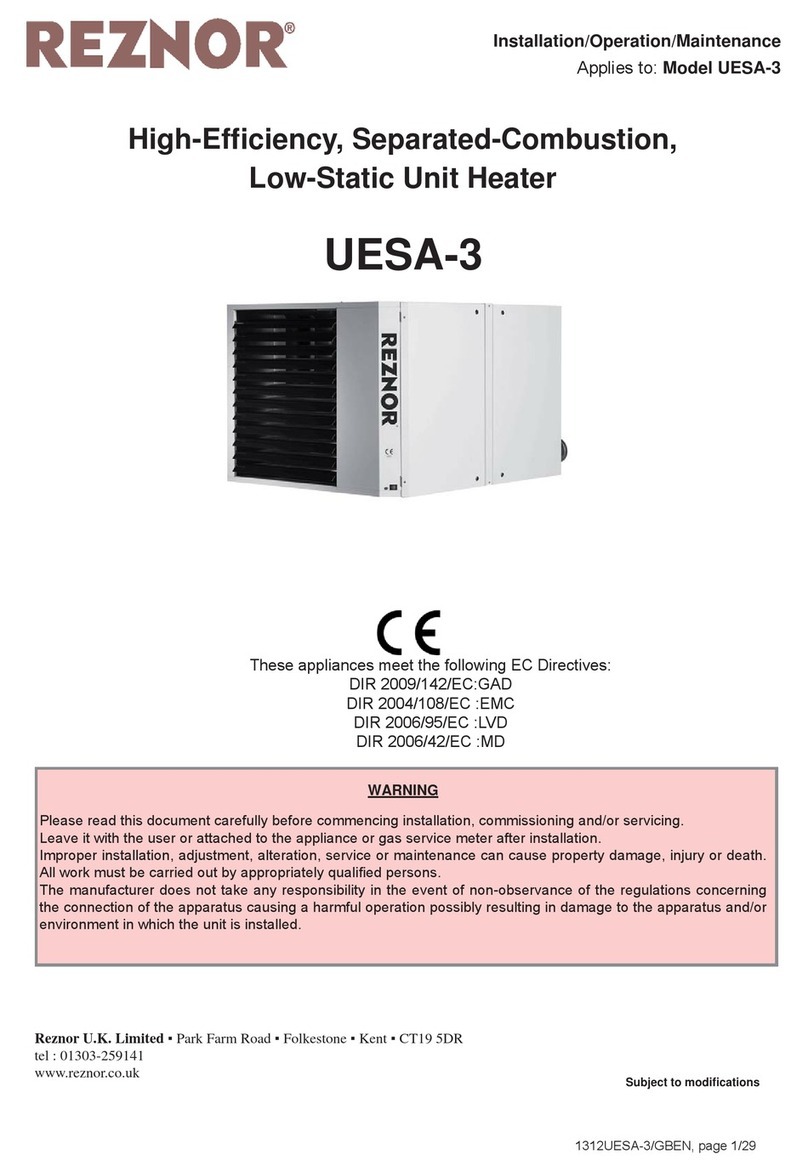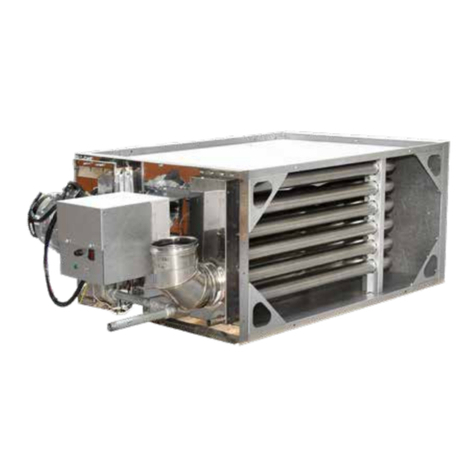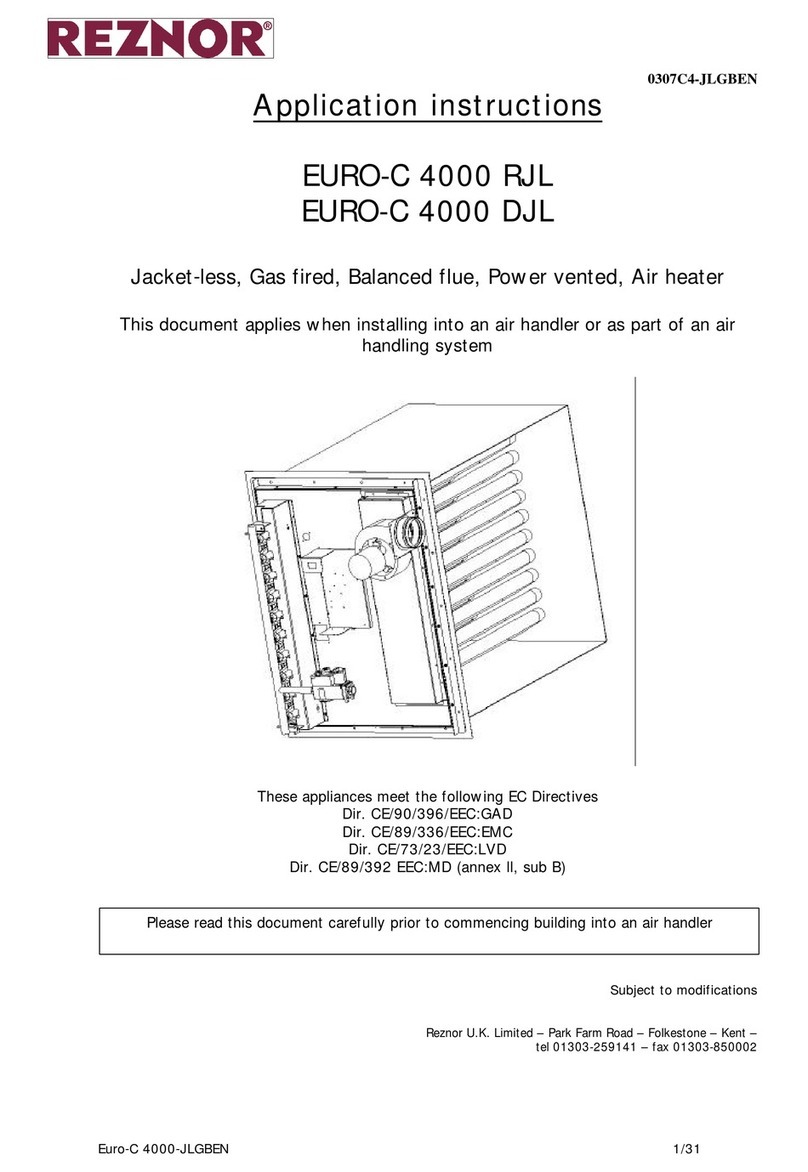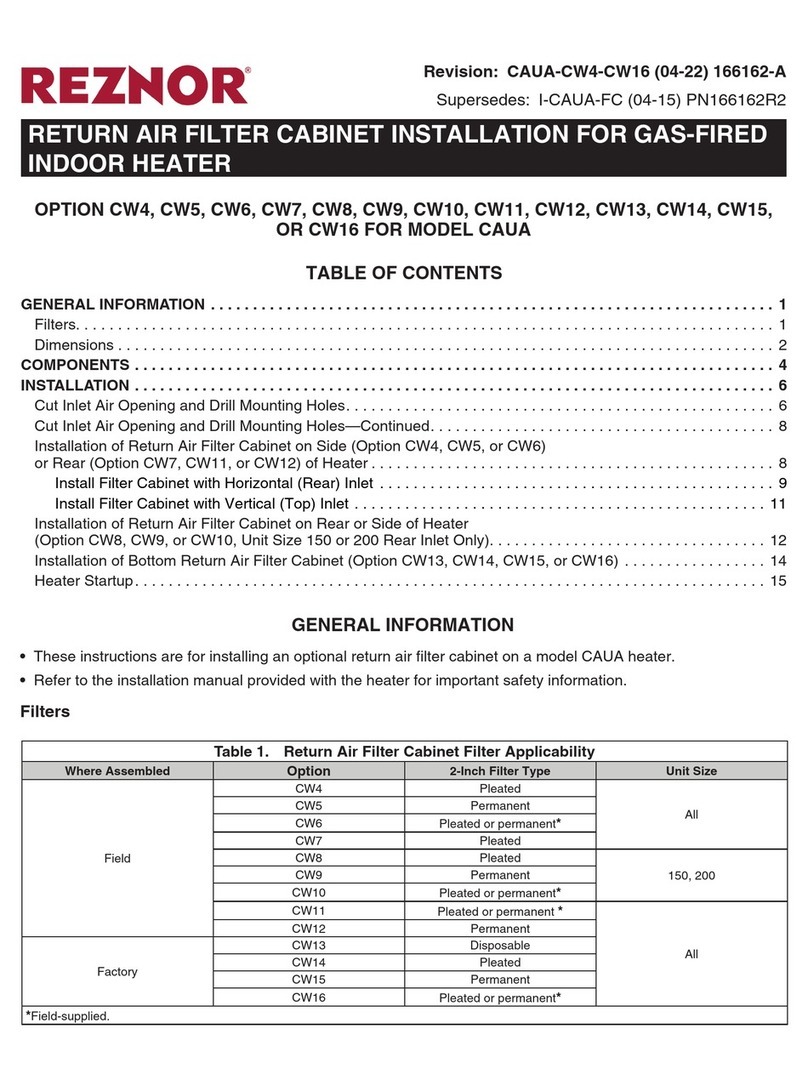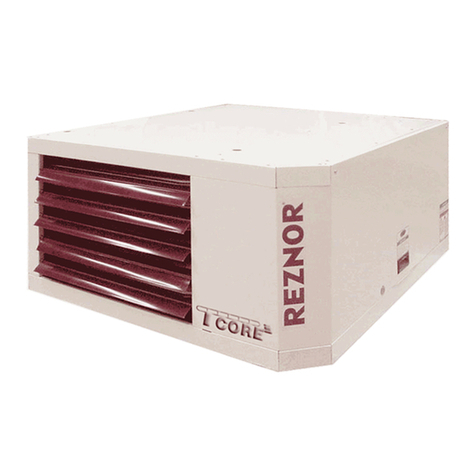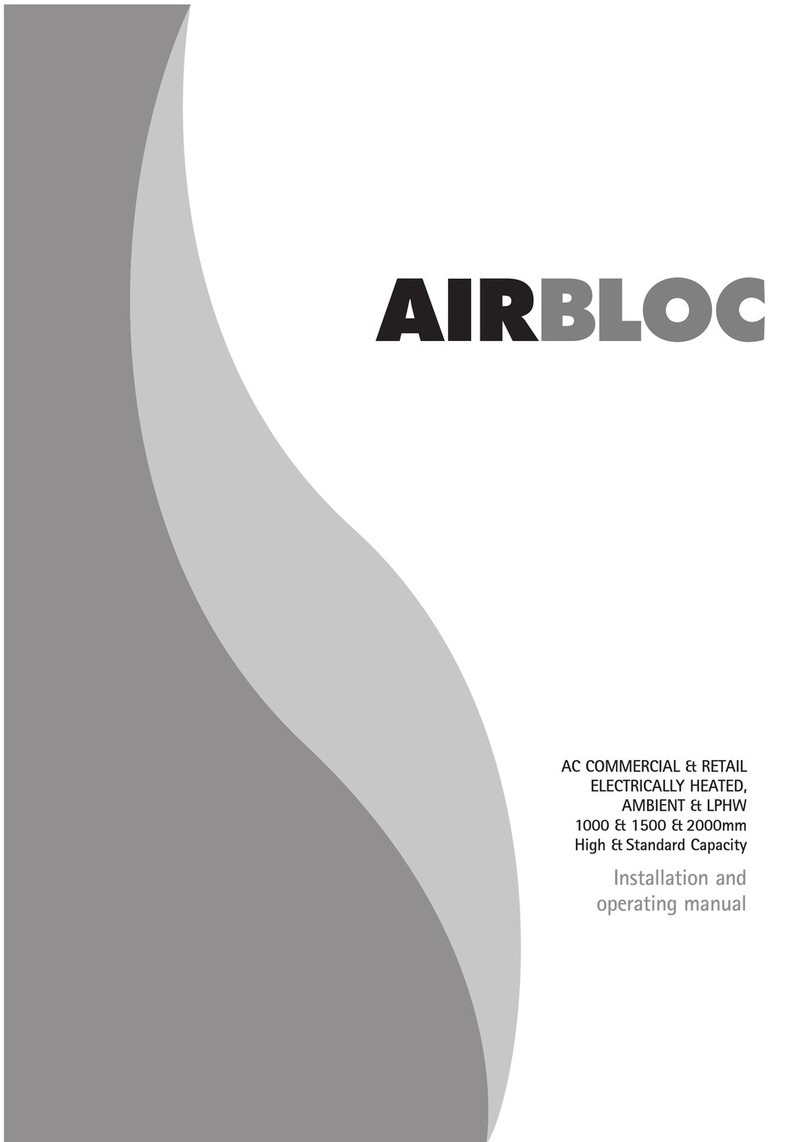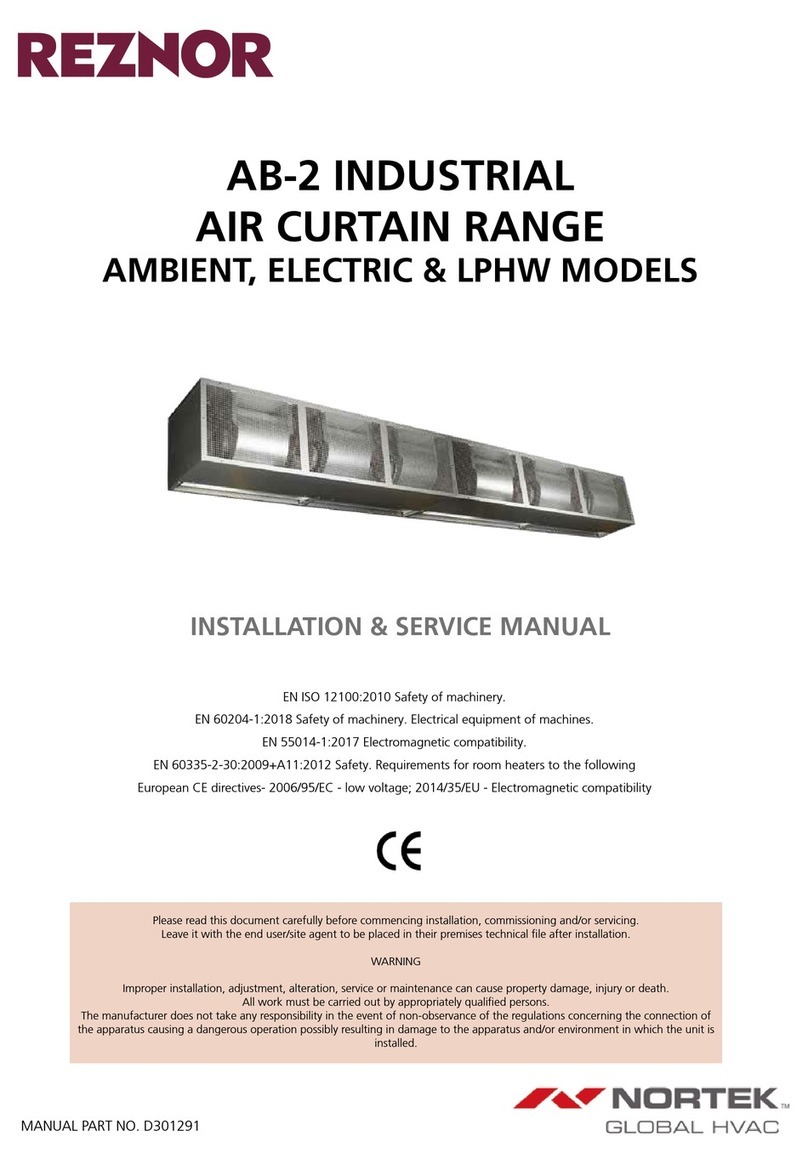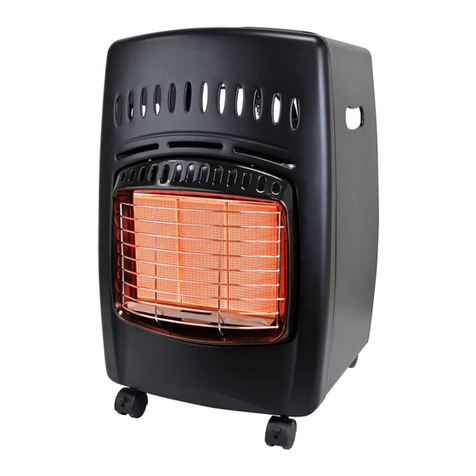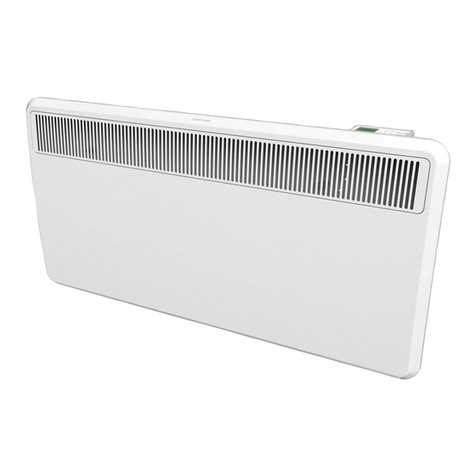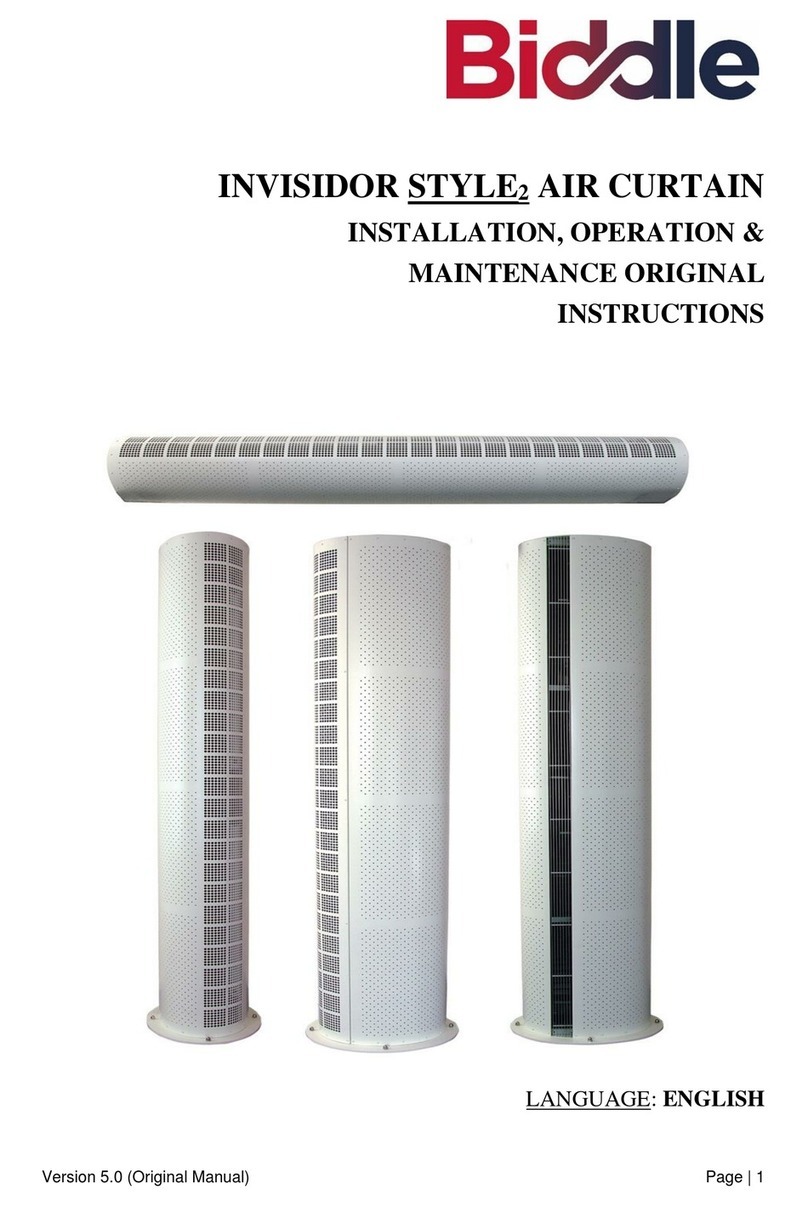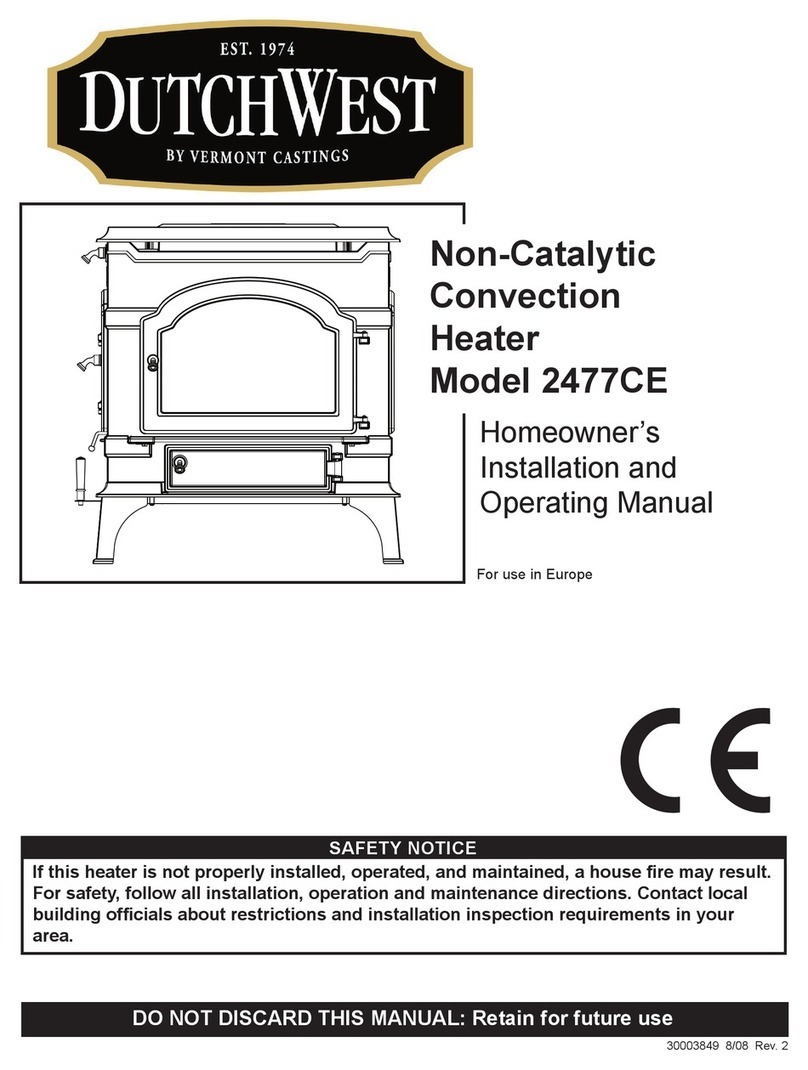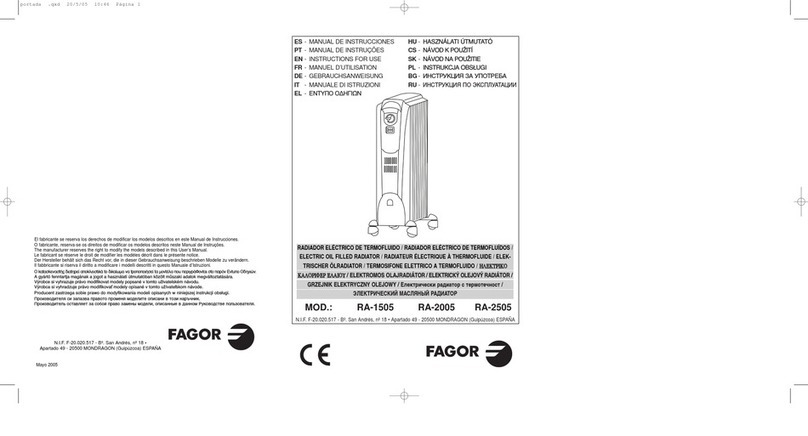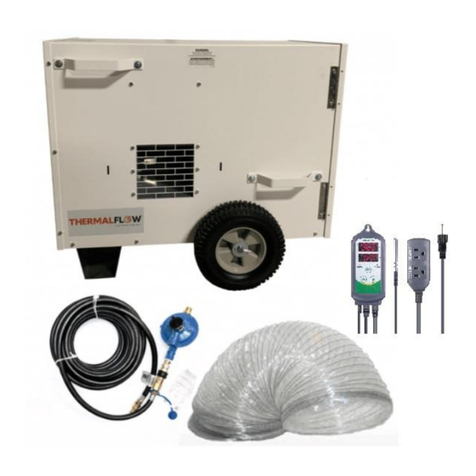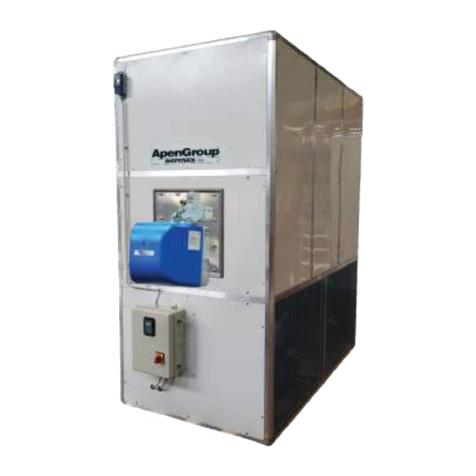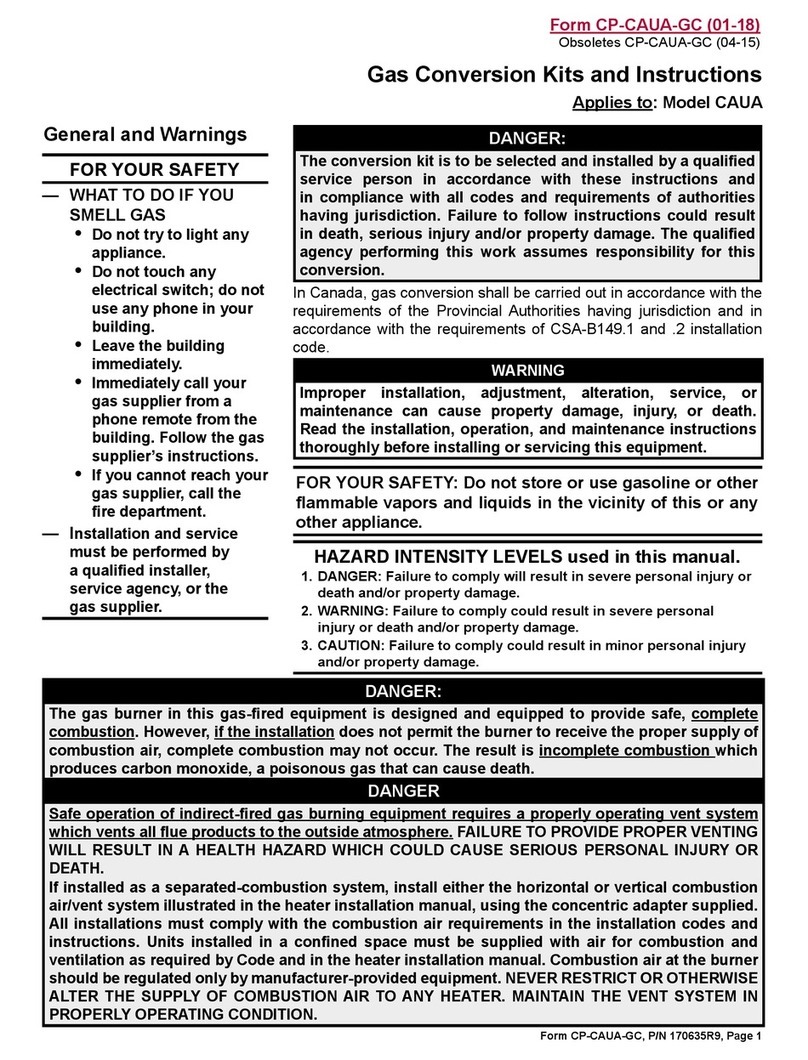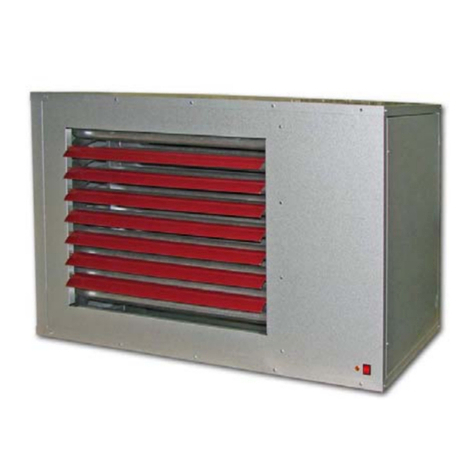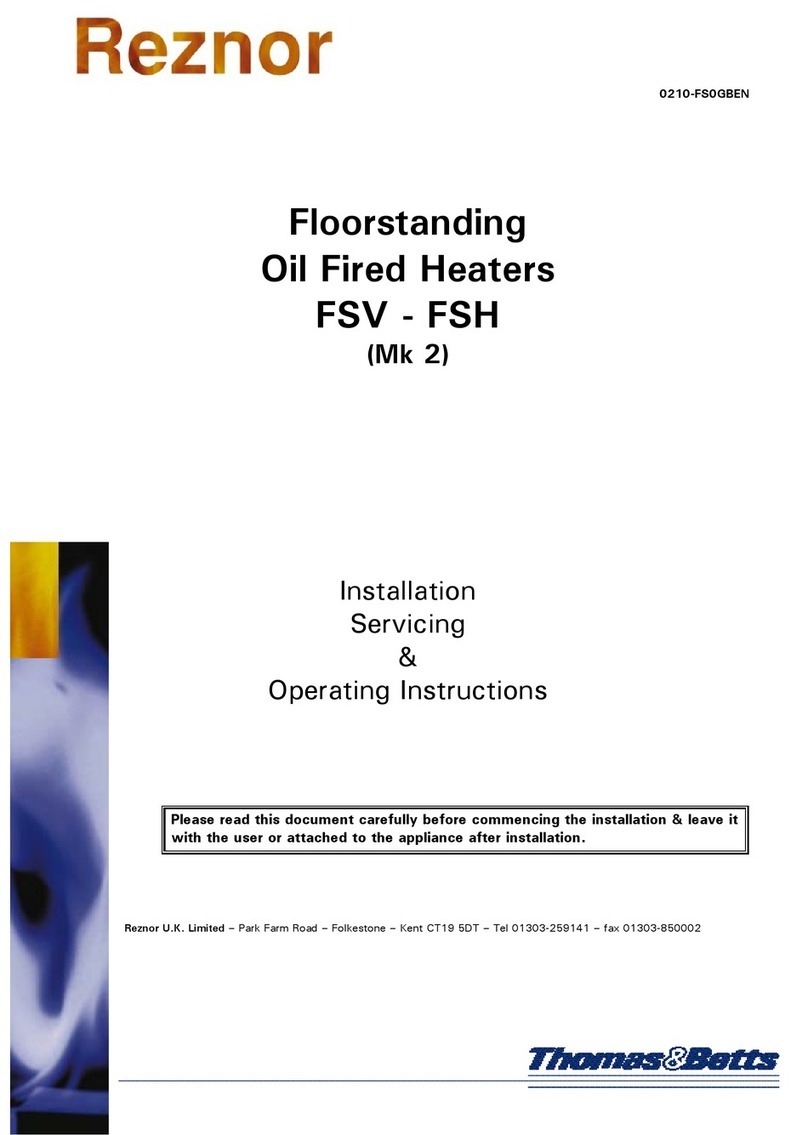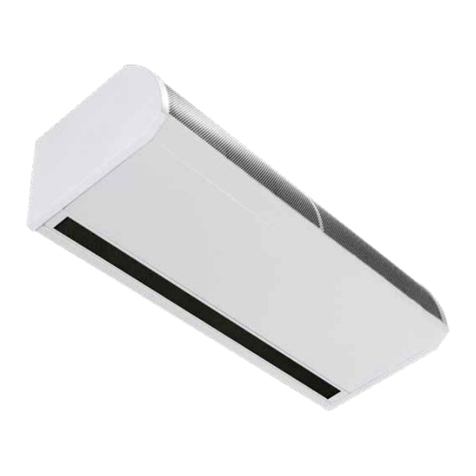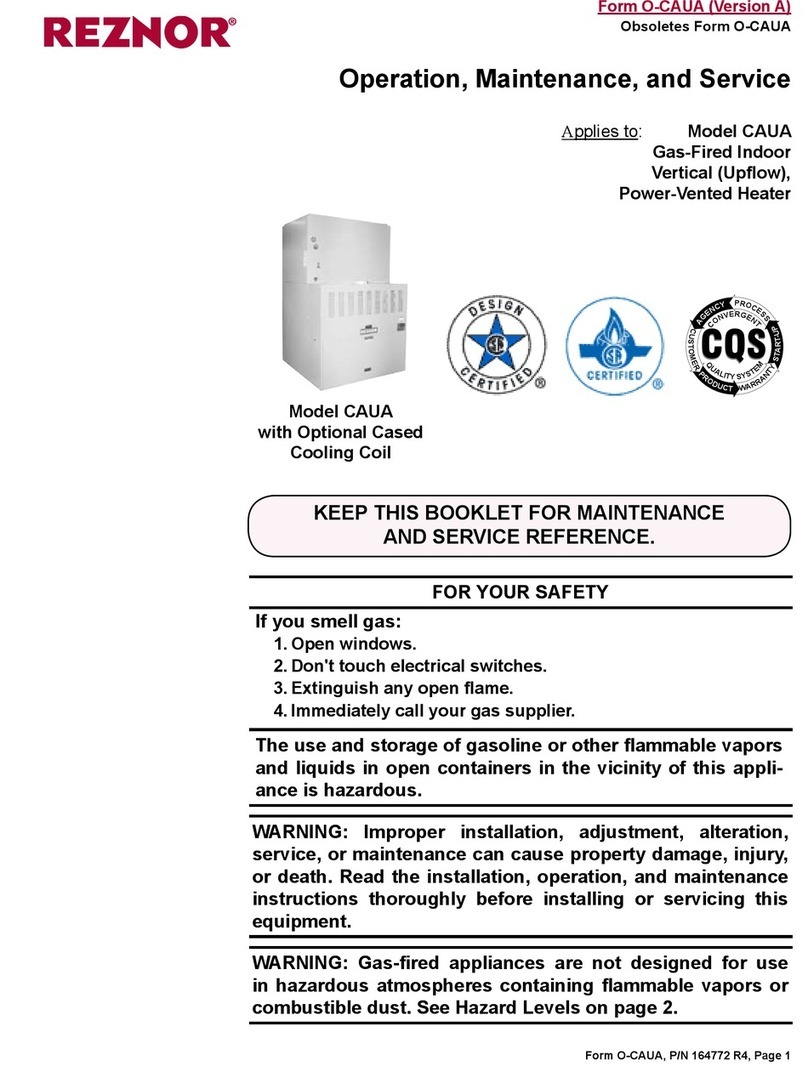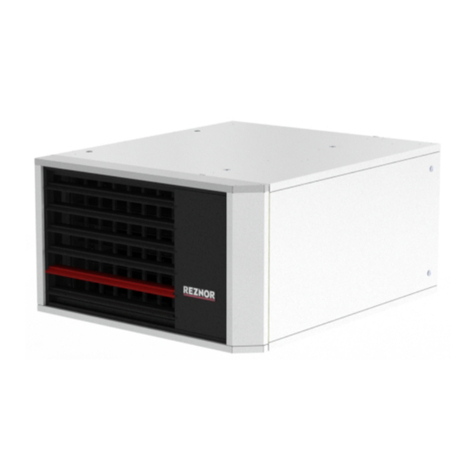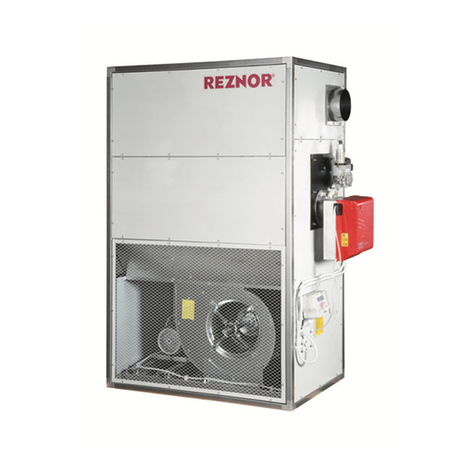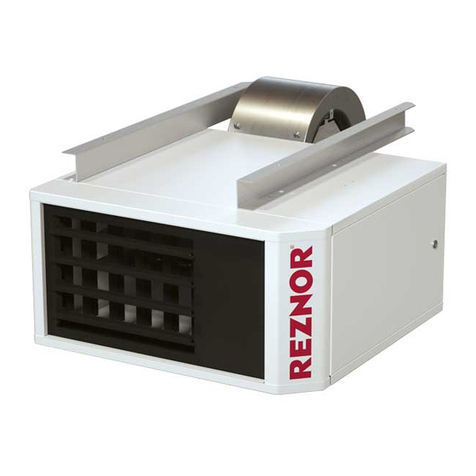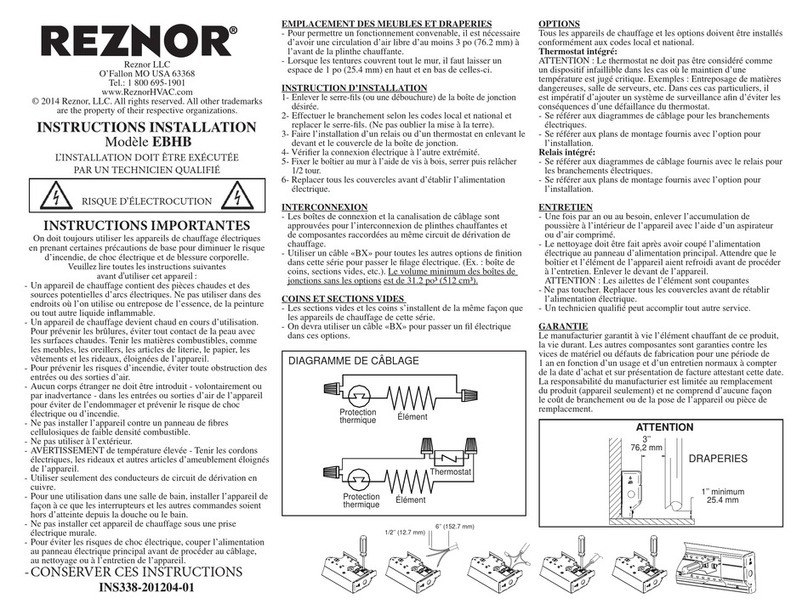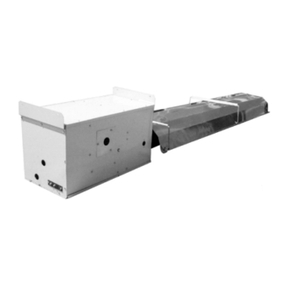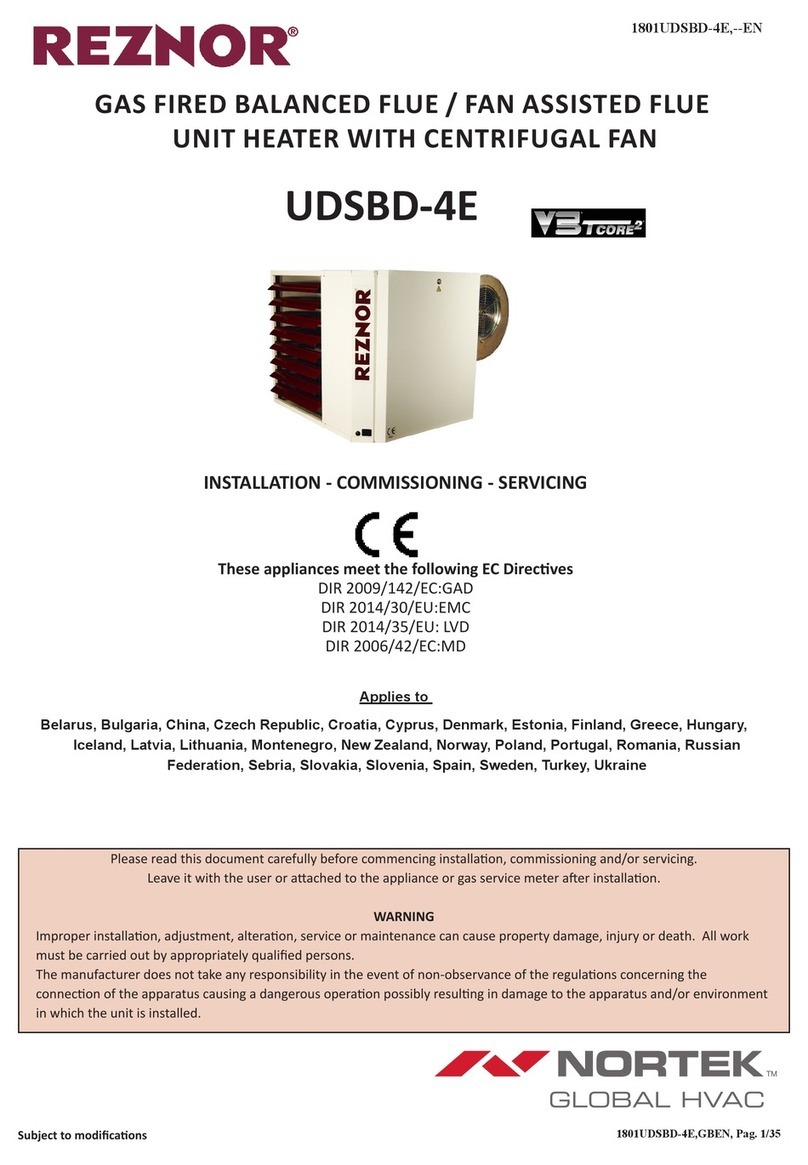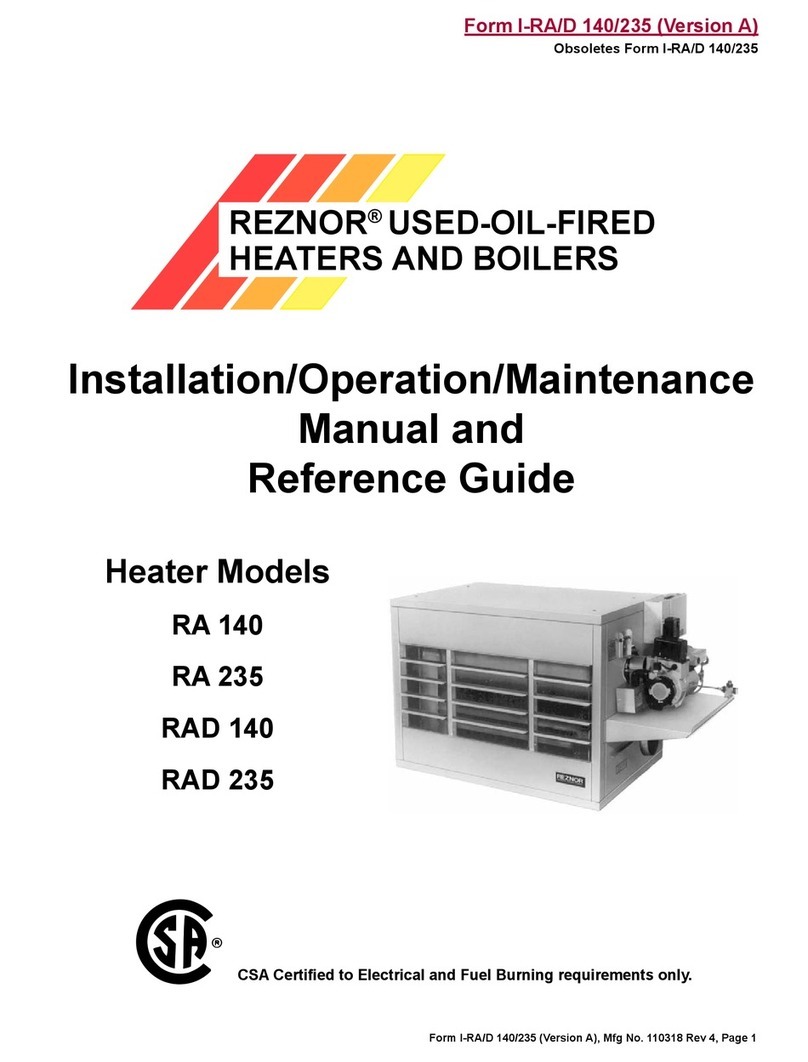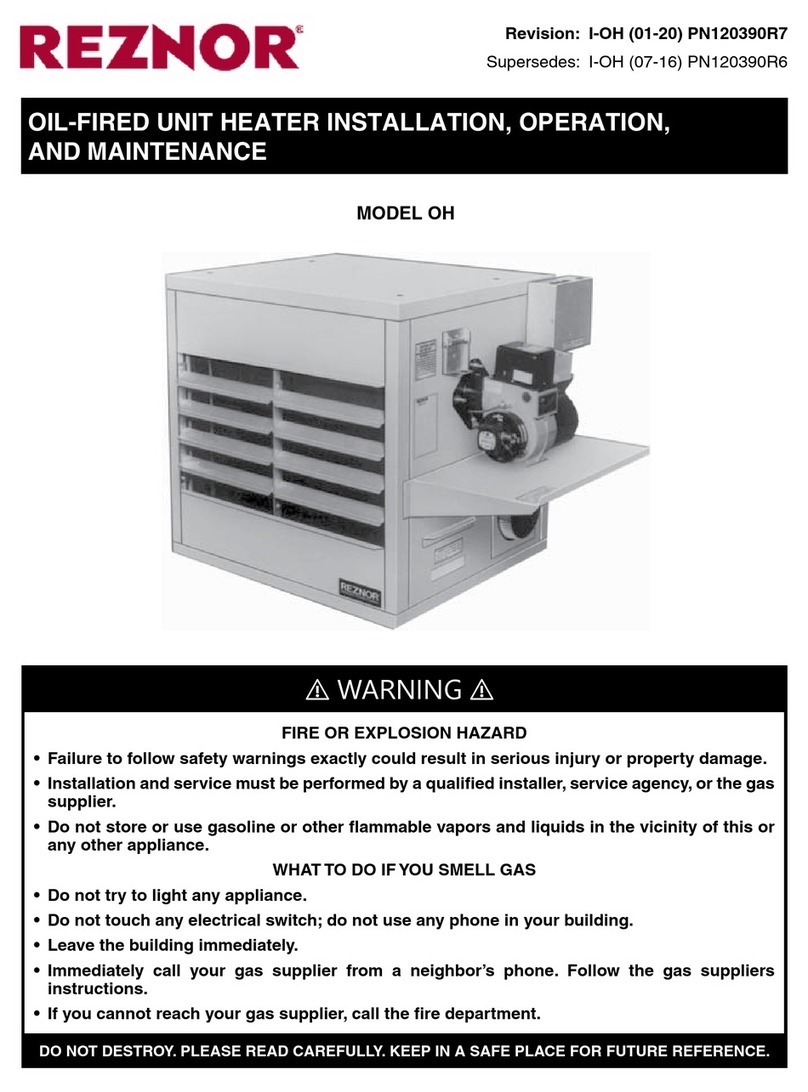
4WS-IOM (12-22) 1042506-0
GENERAL INFORMATION—CONTINUED
Heater Location
⚠ CAUTION ⚠
• Do not locate the heater where it may be exposed to water spray, rain, or dripping water.
• When installing the hydronic unit heater in applications where the heater can be subject to damage
from balls in gymnasiums and/or courts, it is necessary to fit the heater with a frame and a safety
net. The directional air louvers on the front of the unit should especially be protected.
For best results, the heater should be mounted with certain rules in mind:
•Units should always be arranged to blow toward or along exposed wall surfaces, if possible. Where two or more
units are installed in the same room, a general scheme of air circulation should be maintained for best results.
•Suspended heaters are most effective when located as close to the working zone as possible, and this fact should
be kept in mind when determining the mounting heights to be used. However, care should be exercised to avoid
directing the discharged air directly on the room occupants.
•Partitions, columns, counters, or other obstructions should be taken into consideration when locating the unit heater
so that a minimum quantity of airflow will be deflected by such obstacles.
•When units are located in the center of the space to be heated, the air should be discharged toward the exposed
walls. In large areas, units should be located to discharge air along exposed walls with extra units provided to
discharge air in toward the center of the area.
Mounting Height
⚠ WARNING ⚠
If touched, the internal heater surfaces that are accessible from outside the heater will cause burns.
Suspend the heater a minimum of 5 feet (1.5 meters) above the floor.
In general, a unit should be located 10–20 feet (3.5–6.1 meters) above the floor. At those points where infiltration
of cold air is excessive, such as at entrance doors and shipping doors, it is desirable to locate the unit so that it will
discharge directly toward the source of cold air from a distance of 15–20 feet (4.6–6.1 meters).
Heater Throw and Cover
All units can be installed for either horizontal or vertical discharge. Table 1 lists throw and cover data for standard
adjustable horizontal louvers on heaters suspended at varying mounting heights.
Table 1. Heater Throw and Cover with Standard Horizontal Louvers
Unit Size
Fan Speed
Low High Low High Low High Low High
Horizontal Discharge Vertical Discharge
Dimension H*
(Feet (Meters))
Throw
(Feet (Meters))
Dimension H*
(Feet (Meters))
Cover
(Feet2(Meters2))
18/24 10 (3) 10 (3) 16 (5) 23 (7) 10 (3) 11 (3.5) 344 (32) 473 (44)
23/33 10 (3) 10 (3) 16 (5) 25 (7.5) 10 (3) 11 (3.5) 366 (34) 516 (48)
44/62 10 (3) 11 (3.5) 18 (5.5) 26 (8) 11 (3.5) 13 (4) 387 (36) 538 (50)
60/85 11 (3.5) 13 (4) 25 (7.5) 36 (11) 13 (4) 15 (4.5) 484 (45) 646 (60)
78/110 11 (3.5) 13 (4) 33 (10) 46 (14) 15 (4.5) 16 (5) 538 (50) 753 (70)
96/120 13 (4) 15 (4.5) 33 (10) 46 (14) 15 (4.5) 16 (5) 538 (50) 753 (70)
140/175 15 (4.5) 16 (5) 39 (12) 52 (16) 16 (5) 18 (5.5) 646 (60) 861 (80)
190/238 16 (5) 18 (5.5) 46 (14) 59 (18) 18 (5.5) 20 (6) 968 (90) 1184 (110)
300/350 18 (5.5) 20 (6) 66 (20) 85 (26) 23 (7) 30 (9) 1399 (130) 1722 (160)
*Maximum mounting height (see Figure 1).

